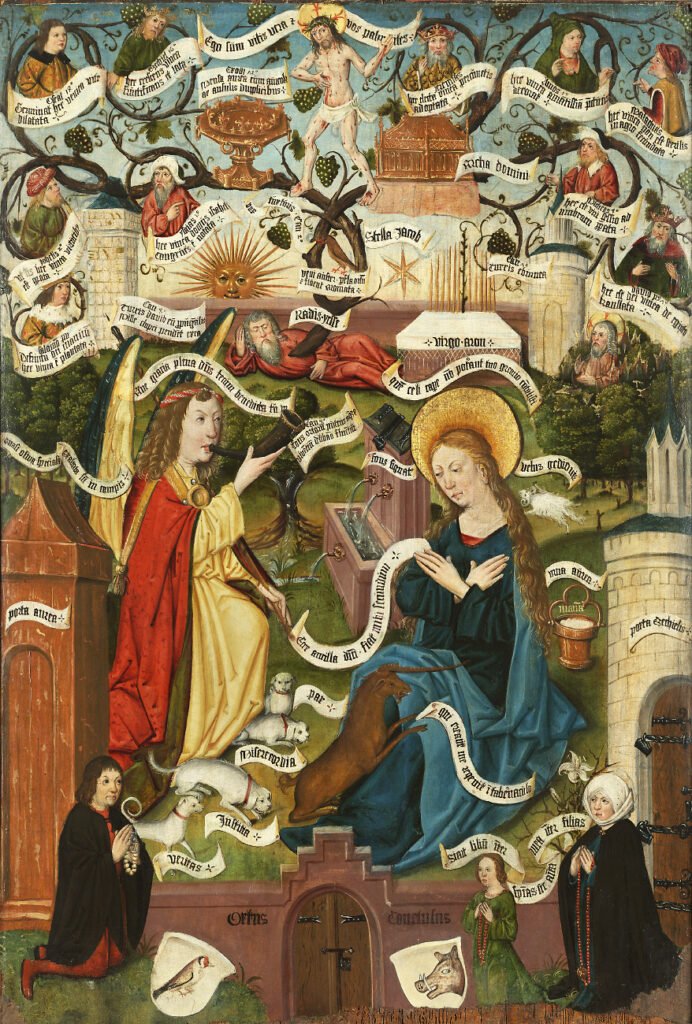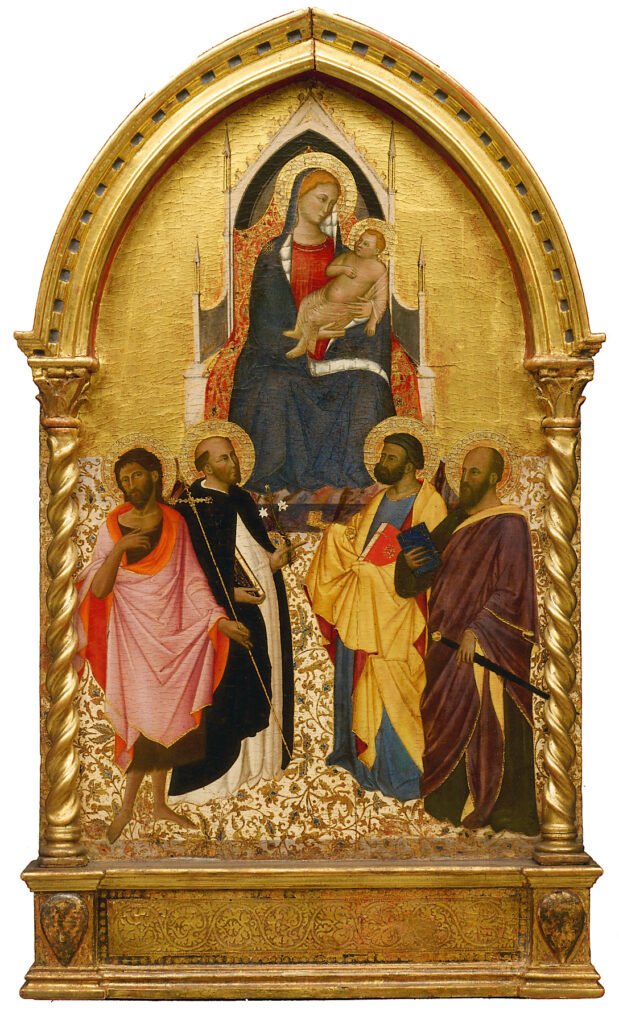Monogrammist AG
(Active in the Upper Rhine region in the late 15th century)
Annunciation. Hortus Conclusus
Oil, tempera on panel 124 x 84 cm
A painter was active in the Upper Rhine region. He came from among the persons close to the famous German artist and engraver Martin Schongauer (possibly, his student or immediate assistant). He is named after the monogram inscribed on his most important works, such as the grand painted altarpiece of the Dominicans at the Unterlinden Musem in Colmar. It is most probable that apart from this altarpiece, the master has also painted the three fragments of the polyptych altarpiece, now lost, which is dated 1489 and is currently hosted by the Pushkin State Museum of Fine Arts, Moscow, Russia. It was suggested that he might be identical with Anton Gerber, active in Pforzheim ca 1480 – 1515. Today the artwork by Monogrammist AG is represented in public collections worldwide, including the Fitzwilliam Museum, Cambridge, England; the National Museum, Warsaw, Poland; the British Museum, London, England; the National Museum of Western Art, Tokyo, Japan.
“The Annunciation” is a fragment of the polyptych altarpiece, now lost, dedicated to the life of the Virgin Mary, dating back to about 1475 – 1499 and painted after the Holy Bible: Luke 1: 26 – 38; The Old Testament, the Book of Ruth 4:17; Isaiah 11:1. It is a rare one-of-a-kind representation of Annunciation iconography with an additional scene of the mystic capture of the unicorn. The Archangel Gabriel is depicted as a hunter blowing his horn while his dogs are chasing the unicorn that seeks protection from the Virgin Mary. According to Physiologist (Greek, 2-3 centuries AD) the hunters can capture the unicorn only after it has lost its powers after being tamed by the Virgin Mary. The painting is an excellent example of narrative Christian art depicting religious and mythological themes. By preserving the archaic features to the fullest, the painter provides a new lyrical and intimate interpretation to the religious subject. The main focus is put on expressing real human feelings. The figures of saints possess the features of people of those times, possibly, common people. Thus Mary and Archangel Gabriel are not idealised in the painting; to the contrary, their outward commonness is underlined, spirited by inner beauty and holiness.
Condition report:
The painting is in very good condition.
Provenance:
Private collection, Basel, Switzerland
Important private collection, Zürich, Switzerland
Bibliography:
Exhibition’s catalogue “Art Rules”, Tallinn, 2015
Beat Wyss: Vier Hortus Conclusus-Darstellungen im Schweizerischen Landesmuseum. In: Zeitschrift für Schweizerische Archäologie und Kunstgeschichte 20, 1960, S. 113-124, hier S. 123
Lexikon der christlichen Ikonographie. Bd. 4, Freiburg 1972, Sp. 556
Jürgen W. Einhorn: Spiritalis Unicornis. Das Einhorn als Bedeutungsträger in Literatur und Kunst des Mittelalters, München 1976, S. 361, Nr. 333
Zu ähnlichen Gemälden und der Ikonographie siehe z. B. Uta Henning: Zur “mystischen Einhornjagd” in Friesach: “Gut Jäger durch Himmels Thron”. Eine spätmittelalterliche Bild- und Liedmetapher. In: Carinthia 189, 1999, S. 177-199.
Exhibitions:
Late Middle age art of the Upper Rhine, City museum of Lindau, 2007
Exhibition “Art Rules” organized by Art-Life Project in Tallinn Town Hall, 5 June 2015 – 5 October 2015, Estonia



